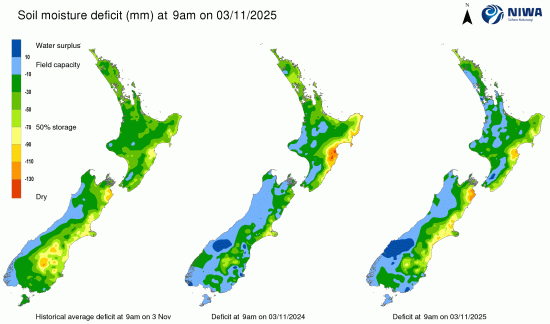Here's our summary of key economic events overnight that affect New Zealand, with news investors are looking sceptically at restarted US data, and the outstanding Nvidia result.
First, the American initial jobless claims reporting has restarted, and they say 216,700 new people filed for these benefits last week, up from 214,000 in the same week a year ago. There are now 1.727 mln people on these benefits, up from 1.66 mln a year ago and the highest since 2021.
And for the record, they released their September non-farm payrolls report overnight too, claiming +119,000 new jobs created in the month. The non-seasonally adjusted data records a rise from the same month a year earlier of +1.2 mln, the least year-on-year rise since the pandemic. The related wage growth data was weak. And they also announced that they will not be releasing an October report.
Meanwhile, the Philly Fed factory survey for October weakened again, including for factory orders. Inflation pressures were reported as higher. Despite all this extended depressed state, these firms say they are optimistic about the future.
It was the inverse story for the same report from the Kansas City Fed. Current conditions were mildly positive and stable, cost pressures eased, but future prospects are less enthusiastic. New order levels dipped here too, but only slightly.
In Canada, their October PPI came in +6.0% higher than year-ago levels, a rise. They may be surviving the trade war punishment from the US, but it is coming with higher costs.
In Taiwan, their October export orders rose +25% from the same month a year ago. As high as that is, it just continues the stellar expansion they have reported all year.
In China, they say they are going to extend their trade-in subsidy program, to keep their modest consumer spending levels underpinned.
And as widely anticipated, the People’s Bank of China kept its key lending rates at record lows for a sixth consecutive month in November. But there is increasing talk that they will be [pressured into reducing them at some stage to weigh against below-target growth.
In Europe, German producer prices fell in October, down -1.8% from the same month a year ago.
In Australia, the IMF told them that they should hike their GST, abandon their tax cuts, and spend more carefully if it wants to keep a fiscally sustainable economy.
And Australia released its GDP by State (they call it GSP). On a real basis for the year to June 2025, NSW expanded +0.9%, Victoria by +1.1%, Queensland by +2.2%, South Australia by +1.0% and Western Australia by +1.3% from the equivalent 2023/24 year. The national rise was +1.4%. But on a per capita basis, only Queensland and Tasmania recorded gains. Nationally it was a -0.3% decline per capita.
Global freight rates for container cargoes were unchanged over the past week, to sit -46% lower than year ago levels. But the weekly change masks rising outbound China to Europe rates, while outbound China to the US rates are falling. Meanwhile, bulk cargo freight rates rose +11% over the past week and are now +39% higher than a year ago.
The UST 10yr yield is now at 4.11%, unchanged from this time yesterday. The key 2-10 yield curve is still at +54 bps. Their 1-5 curve is +1 bp positive and the 3 mth-10yr curve is now +16 bps positive. The China 10 year bond rate is little-changed again, at 1.81%. The Australian 10 year bond yield starts today at 4.47%, up +3 bps. The NZ Government 10 year bond rate starts today at 4.28%, also up +3 bps.
Wall Street is ending today with the S&P500 down -0.4% with the Nvidia effect unsustained. Overnight, European markets were mixed between London's +0.2% and Frankfurt's +0.6%. Yesterday, Tokyo closed is Thursday session bouncing back +2.6%. Hong Kong was unchanged and Shanghai was down -0.4%. Singapore was up a minor +0.1%. The ASX200 was up +1.2% in its Thursday trade. And the NZX50 rose +0.8%.
The price of gold will start today at US$4055/oz, and down -US$16 from this time yesterday.
American oil prices have softened another -50 USc from yesterday to be just under US$59/bbl, with the international Brent price little-changed and still under US$63.50/bbl.
The Kiwi dollar is now at just on 56 USc, and unchanged from yesterday. Against the Aussie we are up +10 bps at 86.8 AUc. Against the euro we are little-changed at 48.6 euro cents. That all means our TWI-5 starts today at just over 60.7, and little-changed from yesterday, and still its lowest since July 2009.
The bitcoin price starts today at US$87,411 and down another -2.4% from yesterday and -11% below year-ago levels. In fact, it is falling as we publish. Volatility over the past 24 hours has been moderate at just on +/- 2.4%.
Daily exchange rates
Select chart tabs
The easiest place to stay up with event risk is by following our Economic Calendar here ».


We welcome your comments below. If you are not already registered, please register to comment.
Remember we welcome robust, respectful and insightful debate. We don't welcome abusive or defamatory comments and will de-register those repeatedly making such comments. Our current comment policy is here.